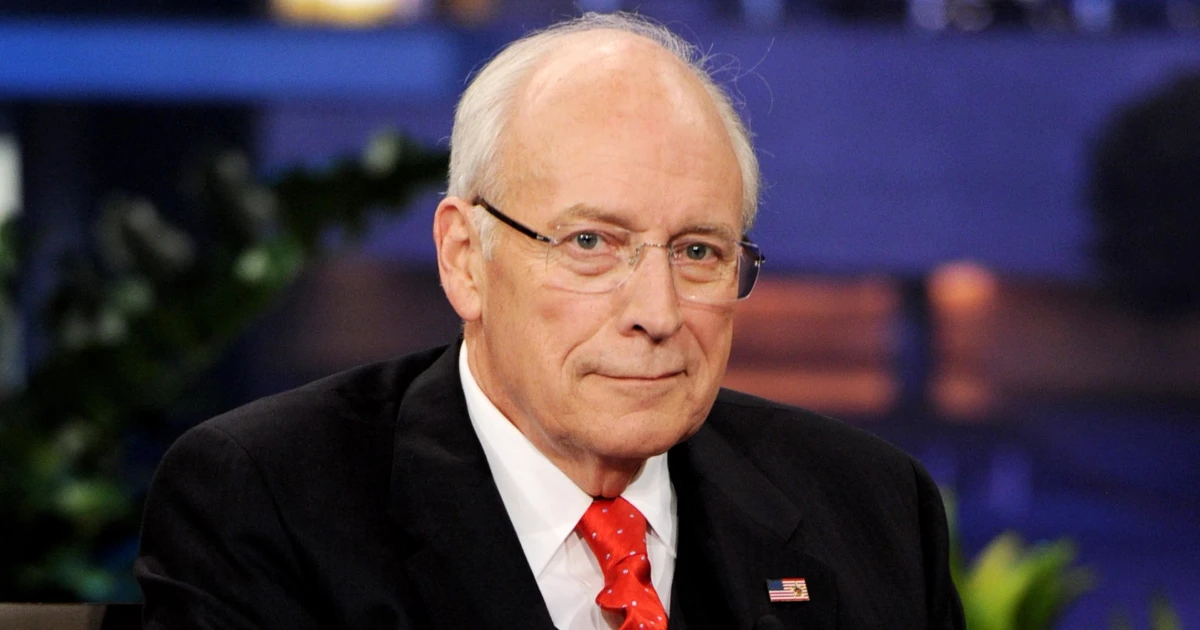Copyright TODAY

Former Vice President Dick Cheney, who served under George W. Bush for two terms in the 2000s, has died at 84 after enduring serious heart issues for decades. The 46th vice president, who died on Nov. 3, was a central figure in American politics for decades. He served as White House chief of staff for President Gerald Ford, a congressman from Wyoming, as Secretary of Defense under former President George H.W. Bush, and, finally, as vice president under George W. Bush from 2001-09. “Dick Cheney was a great and good man who taught his children and grandchildren to love our country, and to live lives of courage, honor, love, kindness, and fly fishing,” his family said in a statement. “We are grateful beyond measure for all Dick Cheney did for our country. And we are blessed beyond measure to have loved and been loved by this noble giant of a man." What Was Dick Cheney's Cause of Death? Cheney's family said in a statement on Nov. 3 that Cheney died from complications of pneumonia and cardiac and vascular disease. What Is Cardiac and Vascular Disease? Cardiac disease affects the heart, while vascular disease affects blood vessels and the circulatory system, according to the Cleveland Clinic. Cardiovascular disease is the leading cause of death in the U.S. and across the world. Symptoms of cardiac disease include the following, according to the Cleveland Clinic: Chest pain Chest pressure, heaviness or discomfort, sometimes described as a “belt around the chest" Shortness of breath Dizziness or fainting Fatigue or exhaustion Symptoms of vascular disease, which block your blood vessels throughout your body, include the following: Pain or cramps in your legs when you walk Leg sores that aren’t healing Cool or red skin on your legs Swelling in your legs Numbness in your face or a limb Difficulty with talking, seeing or walking What Are Symptoms of Pneumonia? Cheney was at a higher risk of severe complications from pneumonia because of his age. It's not clear if he had bacterial pneumonia or viral pneumonia. Bacterial pneumonia, which inflames the lungs due to a bacterial infection, is the more common type. While talking about the death of Oscar-winner Diane Keaton on TODAY on Oct. 16, NBC News medical contributor Dr. Natalie Azar cited four groups of people who are particularly vulnerable to serious effects of pneumonia: infants, people over 65, people with chronic diseases and people with weakened immune systems. Azar also outlined symptoms of pneumonia, including: Bluish lips or fingertips New shortness of breath Chest pain Confusion High fever Severe wet cough What Previous Health Issues Did Dick Cheney Have? Cheney had a history of serious heart issues dating back decades. He wrote in his 2013 book “HEART: An American Medical Odyssey" that he suffered his first heart attack at 37 years old in 1978 and had four subsequent heart attacks. Cheney wrote that 17 months after he ended his second term as vice president, he was in end-stage heart failure in 2010. It was serious enough that he began contemplating death and making final arrangements with his family. He wrote that he could no longer climb stairs or walk out to the driveway to collect the morning newspaper. Cheney had a left ventricular assist device (LVAD) implanted in his chest in 2010, which connects to the left ventricle —the main pumping chamber of the heart —and pumps blood. The pump then returns the blood to the aorta to ensure an adequate blood supply to vital organs, according to his book. Cheney relied on the device until he ultimately underwent a heart transplant in 2012 at 71 years old.



